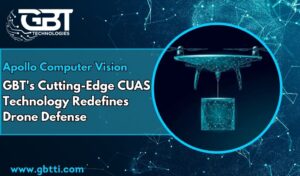Q&A Sessions answered by Artificial Intelligence
We at GBT Technologies Inc. think that is interesting to have technology explained by various AI systems. This will evaluate, compare and show progress over time. Most AI’s are trained toward languages will be able to explain technology better to non-technical readers.
Therefore, we are creating a series of Q&A by AI and letting artificial intelligence answer and post them unedited.
Session # 6.1
Question to CHATGPT ™: “Will artificial intelligence improve the world or destroy it?”
Answer by CHATGPT ™; Artificial intelligence (AI) has become an increasingly important topic in recent years. Some people see AI as a powerful tool that can help us solve some of the world’s most pressing problems, while others worry that it could lead to disastrous consequences. So, will artificial intelligence improve the world or destroy it? The answer is not straightforward and requires a detailed analysis of the potential benefits and risks of AI.
AI has the potential to revolutionize many areas of human life, from healthcare to transportation. In the medical field, AI can help doctors diagnose diseases and create personalized treatment plans. It can also analyze vast amounts of medical data to identify patterns and predict the likelihood of certain diseases. In transportation, self-driving cars powered by AI can reduce traffic accidents, improve traffic flow, and reduce the need for parking. AI can also help to optimize logistics, improve supply chain efficiency, and reduce carbon emissions.
In addition to these practical applications, AI can also be used to solve some of the world’s most pressing social and environmental problems. For example, AI can help to identify and track endangered species, monitor illegal deforestation, and predict and respond to natural disasters. It can also help to create more sustainable cities by optimizing energy use and reducing waste.
However, AI also poses some significant risks. One of the most significant concerns is that AI could be used to create autonomous weapons, which could be programmed to target and kill people without human intervention. This could lead to a catastrophic arms race, with countries developing increasingly sophisticated weapons in a bid to stay ahead of their rivals.
There is also the risk that AI could be used to perpetuate existing biases and inequalities in society. For example, if AI is trained on biased data, it could learn to replicate those biases in its decision-making, leading to discrimination against certain groups.
Another concern is that AI could lead to widespread job loss, as machines take over tasks that were previously performed by humans. This could lead to social unrest and exacerbate existing inequalities in society. Additionally, as AI becomes more advanced, there is a risk that it could surpass human intelligence and become uncontrollable. This scenario, known as the “singularity,” could lead to a future in which machines dominate humanity.
To mitigate these risks, it is essential to develop AI in a responsible and ethical manner. This means ensuring that AI is designed to respect human values and rights, is transparent and explainable, and is subject to appropriate regulation and oversight. It also means investing in education and training to ensure that people have the skills they need to thrive in an AI-powered world.
In conclusion, the question of whether AI will improve the world or destroy it is complex and nuanced. AI has the potential to revolutionize many areas of human life, from healthcare to transportation, and to solve some of the world’s most pressing social and environmental problems.
However, it also poses significant risks, including the development of autonomous weapons, the perpetuation of biases and inequalities, and widespread job loss. To ensure that AI is a force for good, it is essential to develop it in a responsible and ethical manner and to invest in education and training to ensure that people have the skills they need to thrive in an AI-powered world.





